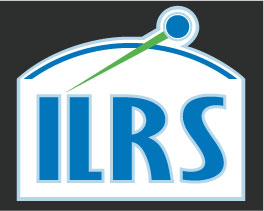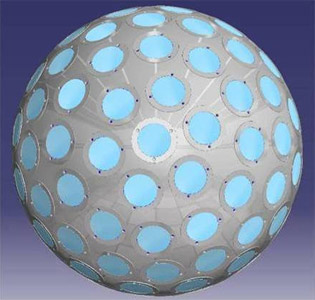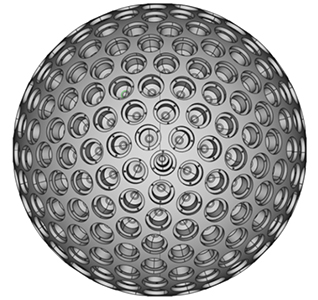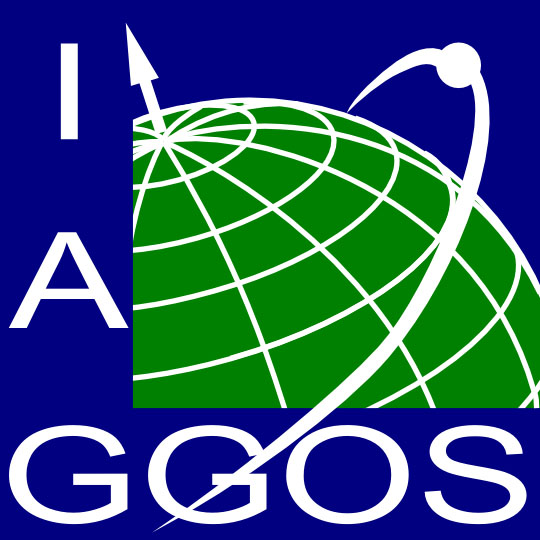
LARES - LAser RElativity Satellite
Jump to: Mission Objectives, Mission Instrumentation, Mission Parameters, Additional Information
Mission Photos:
Mission Objectives:
LARES and LARES-2 will achieve important measurements in gravitational physics, General Relativity, space geodesy and geodynamics, in particular, together with the LAGEOS-1 and LAGEOS-2 satellites and with the GRACE models, it will provide a very accurate determination of the Earth gravitomagnetic field and of the Lense-Thirring effect.
Mission Instrumentation:
The LARES satellite is covered with 92 uncoated cube corner reflectors made from Suprasil 311. Each cube measures: height=27.889 mm, diameter=38.10 mm.
The LARES-2 satellite is covered with 303 uncoated cube corner reflectors made from Fused silica Corning 7980. Each cube measures: height=19.05 +/- 0.25 mm, diameter=25.4 mm.
Mission Parameters:
| Satellite | LARES | LARES-2 |
| Sponsor: | ASI/ESA | ASI/ESA |
| Expected Life: | Many decades | Many decades |
| Primary Applications: | Relativity | Relativity |
| COSPAR ID: | 1200601 | 2208001 |
| SIC Code: | 5987 | 5988 |
| Satellite Catalog (NORAD) Number: | 38077 | 53105 |
| Launch Date: | 13-Feb-2012 | 13-Jul-2022 |
| Satellite Radius: | 182 mm | 212 mm |
| RRA Shape: | Sphere | Sphere |
| Reflectors: | 92 corner cubes | 303 corner cubes |
| Size of Reflector: | 38.10 mm diameter | 25.4 mm diameter |
| Orbit: | circular | circular |
| Inclination: | 69.5 degrees | 70.16 degrees |
| Altitude: | 1450 km | 5899 km |
| Eccentricity: | 0.0 | Between 0 and 0.0025 |
| Weight: | 386.8 kg | 297.5 kg |
Additional Information:
Websites:
- ASI home page
- LARES Mission home page
Publications:
- Arnold, D. A., "Thermal-optical design of a geodetic satellite for one millimeter accuracy," Advances in Space Research, Volume 65, Issue 10, 2020, Pages 2276-2289, DOI: 10.1016/j.asr.2020.01.031
- Ciufolini I., Matzner R., Paolozzi A. et al., (2019). "Satellite Laser-Ranging as a Probe of Fundamental Physics." Scientific Reports, 9(1):15881, doi: 10.1038/s41598-019-52183-9
- Ciufolini I., Paolozzi A., Pavlis E.C. et al., (2019). "An improved test of the general relativistic effect of frame-dragging using the LARES and LAGEOS satellites", The European Physical Journal C, 79(10), 872, doi: 10.1140/epjc/s10052-019-7386-z
- Ciufolini I., Paolozzi A., Pavlis E.C. et al. (2023). "The LARES 2 satellite, general relativity and fundamental physics", Euro. Phys. Journal C., 83(1), 87, doi: 10.1140/epjc/s10052-023-11230-6
- Kucharski D., Lim H.C., Kirchner G. et al., (2014). "Spin Axis Precession of LARES Measured by Satellite Laser Ranging", IEEE Geoscience and Remote Sensing Letters, 11(3), 646-650, doi: 10.1109/LGRS.2013.2273561
- Loomis B.D., Rachlin K.E., Luthcke S.B. (2019). "Improved Earth oblateness rate reveals increased ice sheet losses and mass-driven sea level rise". Geophys. Res. Lett, 46, 6910–6917, doi: 10.1029/2019GL082929
- Loomis B., Rachlin K., Wiese D. et al. (2020). "Replacing GRACE/GRACE-FO C30 With Satellite Laser Ranging: Impacts on Antarctic Ice Sheet Mass Change", Geophys. Res. Lett., 47, e2019GL085488, doi: 10.1029/2019GL085488
- Lucchesi D.M., Anselmo L., Bassan M. et al. (2019). "General Relativity Measurements in the Field of Earth with Laser-Ranged Satellites: State of the Art and Perspectives", Universe, 5, 141, doi: 10.3390/universe5060141
- Lucchesi D., Visco M., Peron R., et al. (2020). "A 1% Measurement of the Gravitomagnetic Field of the Earth with Laser-Tracked Satellites", Universe, 6(9), 139, doi: 10.3390/universe6090139
- Paolozzi A. Ciufolini I., Vendittozzi C. (2011). "Engineering and scientific aspects of LARES satellite", Acta Astronautica, 69(3-4), 127-134, doi: 10.1016/j.actaastro.2011.03.005
- Paolozzi A., Ciufolini I. (2012). "LARES successfully launched in orbit: Satellite and mission description", Acta Astronautica, 91, 313-321, doi: 10.1016/j.actaastro.2013.05.011
- Paolozzi A., Ciufolini I., Paris C., Sindoni G. (2015). "LARES: A New Satellite Specifically Designed for Testing General Relativity", International Journal of Aerospace Engineering, 341384, doi: 10.1155/2015/341384
- Rodriguez J., Appleby G., Otsubo T. (2019). "Upgraded modelling for the determination of centre of mass corrections of geodetic SLR satellites: impact on key parameters of the terrestrial reference frame", J. Geodesy, 93(12), 2553-2568, doi: 10.1007/s00190-019-01315-0






